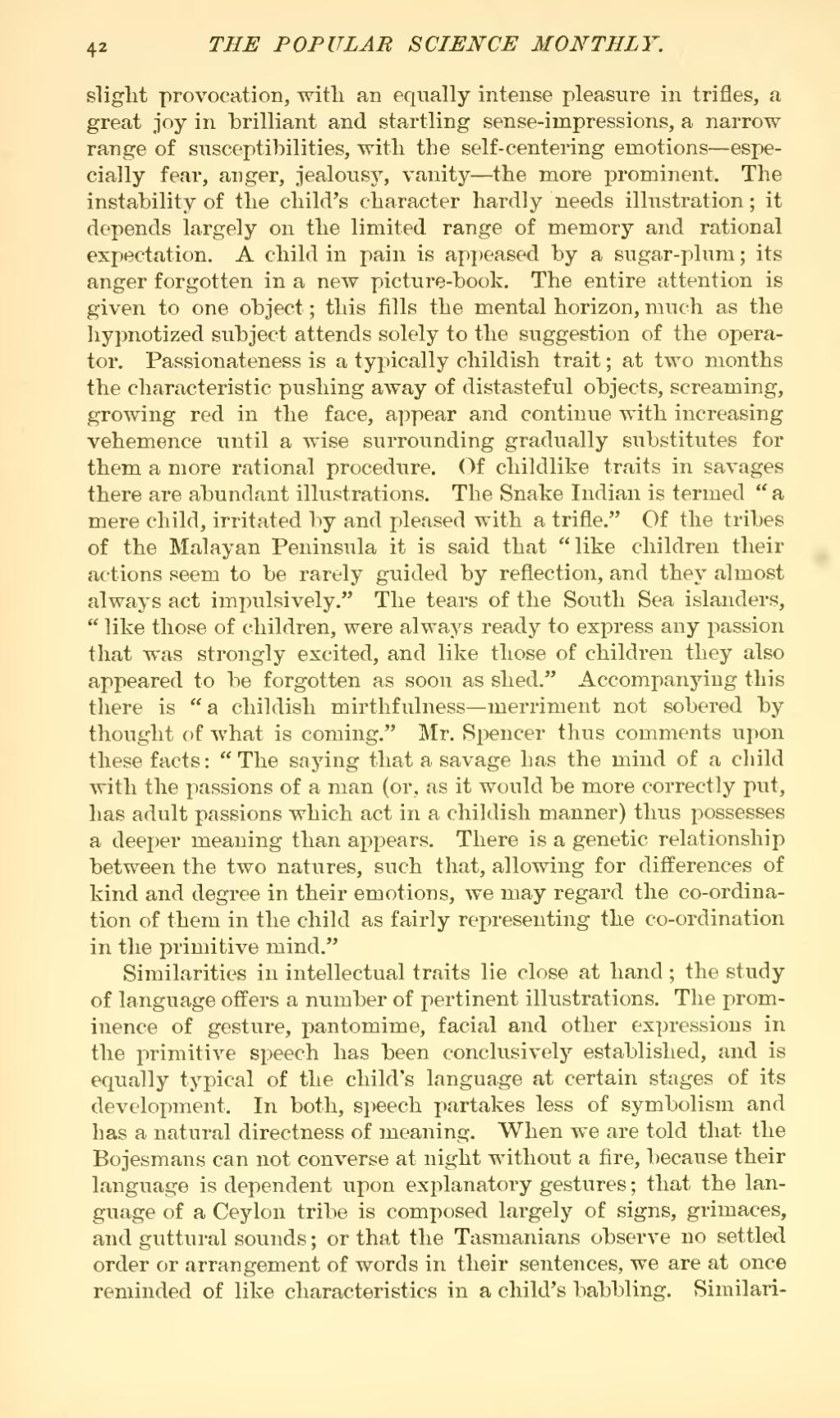slight provocation, with, an equally intense pleasure in trifles, a great joy in brilliant and startling sense-impressions, a narrow range of susceptibilities, with the self-centering emotions—especially fear, anger, jealousy, vanity—the more prominent. The instability of the child's character hardly needs illustration; it depends largely on the limited range of memory and rational expectation. A child in pain is appeased by a sugar-plum; its anger forgotten in a new picture-book. The entire attention is given to one object; this fills the mental horizon, much as the hypnotized subject attends solely to the suggestion of the operator. Passionateness is a typically childish trait; at two months the characteristic pushing away of distasteful objects, screaming, growing red in the face, appear and continue with increasing vehemence until a wise surrounding gradually substitutes for them a more rational procedure. Of childlike traits in savages there are abundant illustrations. The Snake Indian is termed" a mere child, irritated by and pleased with a trifle." Of the tribes of the Malayan Peninsula it is said that "like children their actions seem to be rarely guided by reflection, and they almost always act impulsively." The tears of the South Sea islanders, "like those of children, were always ready to express any passion that was strongly excited, and like those of children they also appeared to be forgotten as soon as shed." Accompanying this there is "a childish mirthfulness—merriment not sobered by thought of what is coming." Mr. Spencer thus comments upon these facts: "The saying that a savage has the mind of a child with the passions of a man (or, as it would be more correctly put, has adult passions which act in a childish manner) thus possesses a deeper meaning than appears. There is a genetic relationship between the two natures, such that, allowing for differences of kind and degree in their emotions, we may regard the co-ordination of them in the child as fairly representing the co-ordination in the primitive mind."
Similarities in intellectual traits lie close at hand; the study of language offers a number of pertinent illustrations. The prominence of gesture, pantomime, facial and other expressions in the primitive speech has been conclusively established, and is equally typical of the child's language at certain stages of its development. In both, speech partakes less of symbolism and has a natural directness of meaning. When we are told that the Bojesmans can not converse at night without a fire, because their language is dependent upon explanatory gestures; that the language of a Ceylon tribe is composed largely of signs, grimaces, and guttural sounds; or that the Tasmanians observe no settled order or arrangement of words in their sentences, we are at once reminded of like characteristics in a child's babbling. Similari-
